The Senckenberg Natural History Museum (Naturmuseum Senckenberg)
When in Frankfurt, take the opportunity to visit one of the largest natural history museums in Germany, the Naturmuseum Senckenberg (Senckenberg Natural History Museum). Team members at Everything Dinosaur did just that, visiting the museum just prior to the commencement of a major refurbishment programme. The spacious dinosaur gallery is perhaps, the most popular gallery in the museum and it is certainly worth a look around, but in addition, there are plenty of other gems to spot amongst the extensive collection of The Senckenberg Research Institute.
Tyrannosaurus rex Greets Visitors to the Naturmuseum Senckenberg
Picture credit: Everything Dinosaur
The Dinosaur Gallery at the Naturmuseum Senckenberg
With a life-size replica of T. rex to be found opposite the main entrance, visitors to the museum will not be surprised to discover that a cast of Tyrannosaurus rex can be found in the ground floor dinosaur gallery.
The near forty-foot-long replica positioned on a landscaped area over the road from the entrance to the museum, is in very good condition, given the amount of attention the Frankfurt T. rex was getting from young dinosaur fans who were delighted to get up close to the statue and run between the theropod’s giant legs.
A Cast of a Tyrannosaurus rex Skeleton in the Dinosaur Gallery
Picture credit: Everything Dinosaur
Visiting the Dinosaur Gallery
Although the gallery is quite large and all the life-size dinosaurs that occupy the floor space are mounted on raised platforms, visiting the gallery later in the afternoon, affords the visitor the best views as towards closing time the galleries are much less busy.
For us, a highlight of the dinosaur gallery was being able to view the marvellous Bob Nicholls replica of Psittacosaurus, the dinosaur featured in a recently published scientific paper that examined the idea of counter shading in forest dwelling dinosaurs. This beautiful model demonstrates how our views about the appearance of dinosaurs has changed. Contrast, for example, Bob’s remarkable replica with some of the painted images of dinosaurs that occupy the walls of the dinosaur gallery.
The Life-size Psittacosaurus Replica on Display
Picture credit: Everything Dinosaur
A Psittacosaurus Fossil Specimen
The beautifully preserved fossil Psittacosaurus specimen that was used in the recent study into dinosaur colouration can be found in the Senckenberg Research Institute’s vertebrate fossil collection. The fossil probably came from the Yixian Formation of Liaoning Province (north-eastern China), most likely from an illegal smuggling operation. However, the specimen was purchased by the Frankfurt museum (see photograph below).
To read an article from Everything Dinosaur about this exciting area of research: Calculating the Colour of Psittacosaurus.
A Cast of the Psittacosaurus Fossil on Display at the Museum
Picture credit: Everything Dinosaur
As well as specimens of Diplodocus, Iguanodon, Triceratops (T. prorsus) and Euoplocephalus, look out for the wall-mounted Plateosaurus and the collection of dinosaur eggs.
An Oviraptor on Display Next to Examples of Dinosaur Nests and Eggs
Picture credit: Everything Dinosaur
With many of the information panels written in both German and English, these thoughtful displays are most illuminating.
Other Museum Highlights – the Naturmuseum Senckenberg
The mammal gallery is most impressive, look out for the Quagga display (an extinct sub-species of plains Zebra), one of just a handful of specimens in the world. In the marsupial area, a Thylacine can be found, standing amongst its close relatives the Tasmanian Devil and the Quoll.
The Thylacine is Included in the Marsupial Mammals Display
Picture credit: Everything Dinosaur
Spectacular Displays of Ancient and Not So Ancient Prehistoric Elephants
Picture credit: Everything Dinosaur
For models and replicas of prehistoric elephants and other amazing, extinct creatures: Eofauna Scientific Research Models.
Messel Oil Shales and Marine Reptiles
For the keen fossil fan, there is a substantial display of invertebrate fossils helping to get across the concept of deep time as well as explaining biostratigraphy (check out the ammonites that help to illustrate this). An entire side gallery has been dedicated to the remarkable fossils from the Messel Oil Shales. We suspect this part of the museum has been recently modernised, the displays were well lit and the many different types of animal and plant fossil from the Messel pits were thoughtfully showcased and grouped by Phyla and Orders.
Part of the Messel Oil Shales Gallery
Picture credit: Everything Dinosaur
The marine reptile gallery was also most impressive. There were a large number of replica fossils on display including spectacular examples of ichthyosaurs, placodonts, plesiosaurs, turtles and nothosaurs.
Visitors to the museum also have the opportunity to view examples of giants of the sea around today with a most informative cetacean gallery. It was also a pleasure to see explanation panels on the evolution of the whale family along with specimens representing Basilosaurus and Ambulocetus, the Ambulocetus tying in nicely with the Messel fossils exhibit.
An Exhibit Explaining How the Plesiosauria “Flew” Underwater
Picture credit: Everything Dinosaur
One of the Displays from the Spectacular Cetacean Gallery
Picture credit: Everything Dinosaur
We look forward to learning more about the refurbishment programme for this museum and whilst we appreciate there will be some disruption during this work, we recommend this museum. It is well worth a visit.
Also worth a visit, the award-winning and very popular Everything Dinosaur website: Everything Dinosaur.


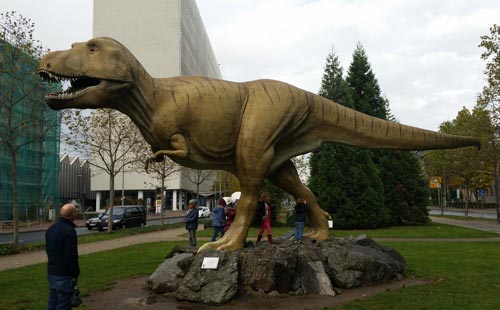
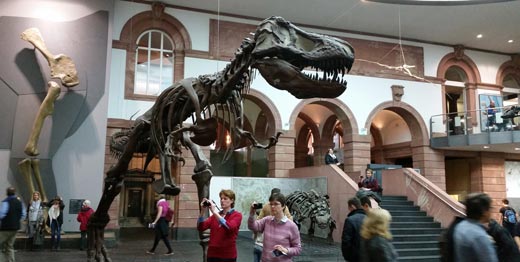
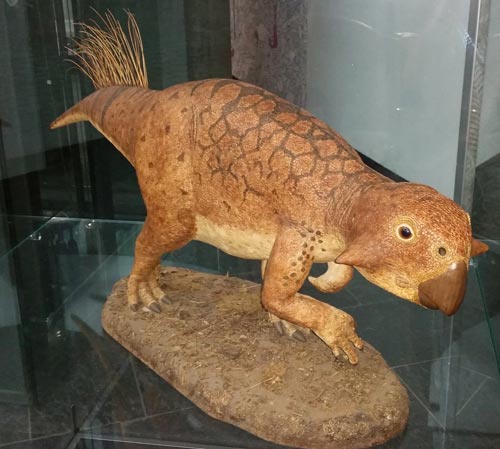
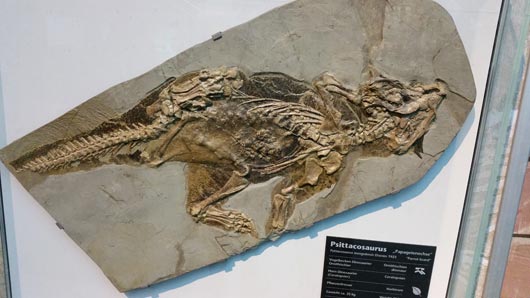
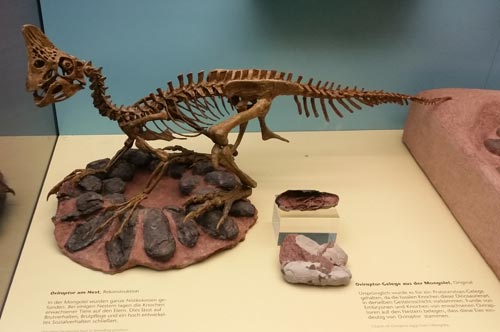
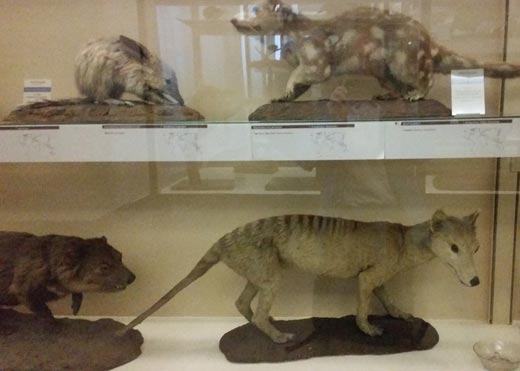
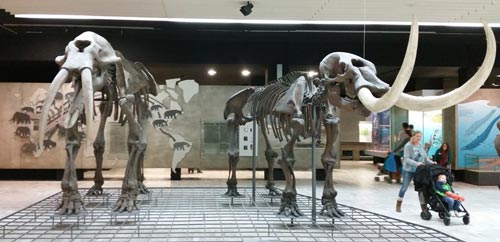
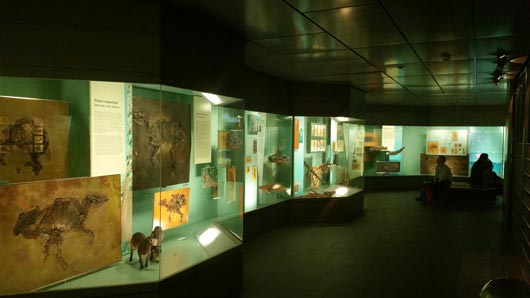
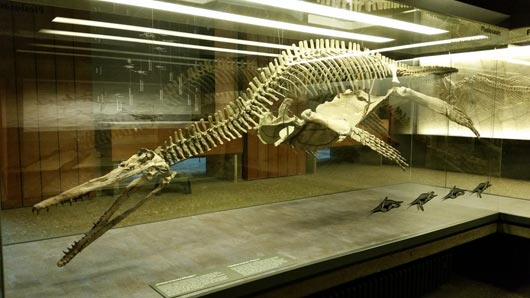
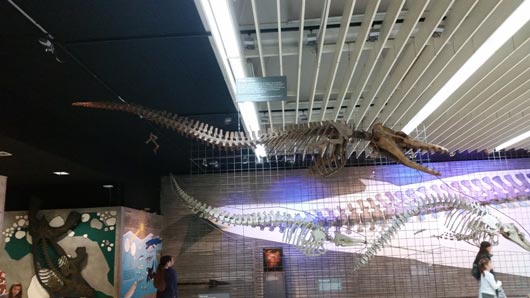




Leave A Comment